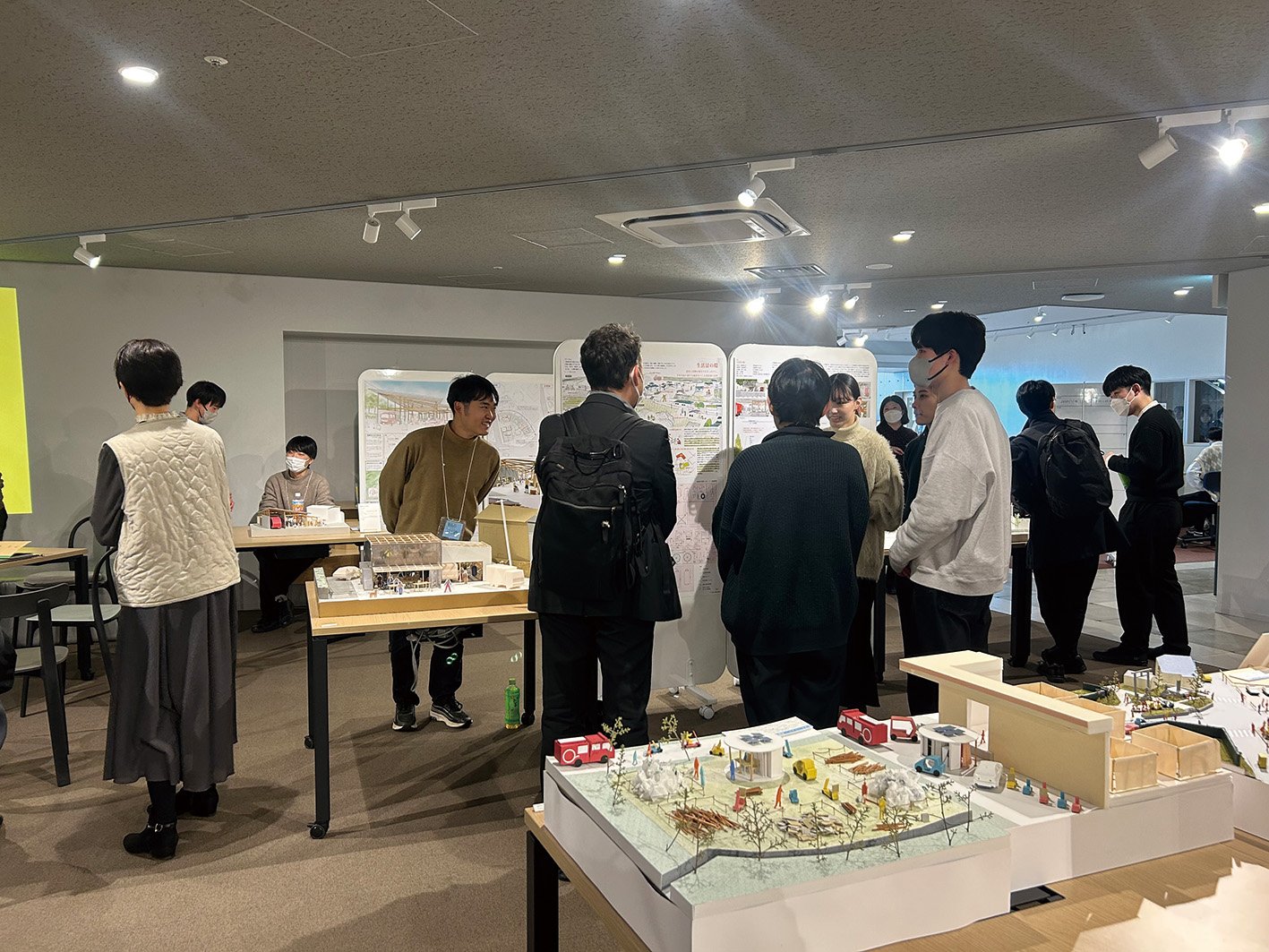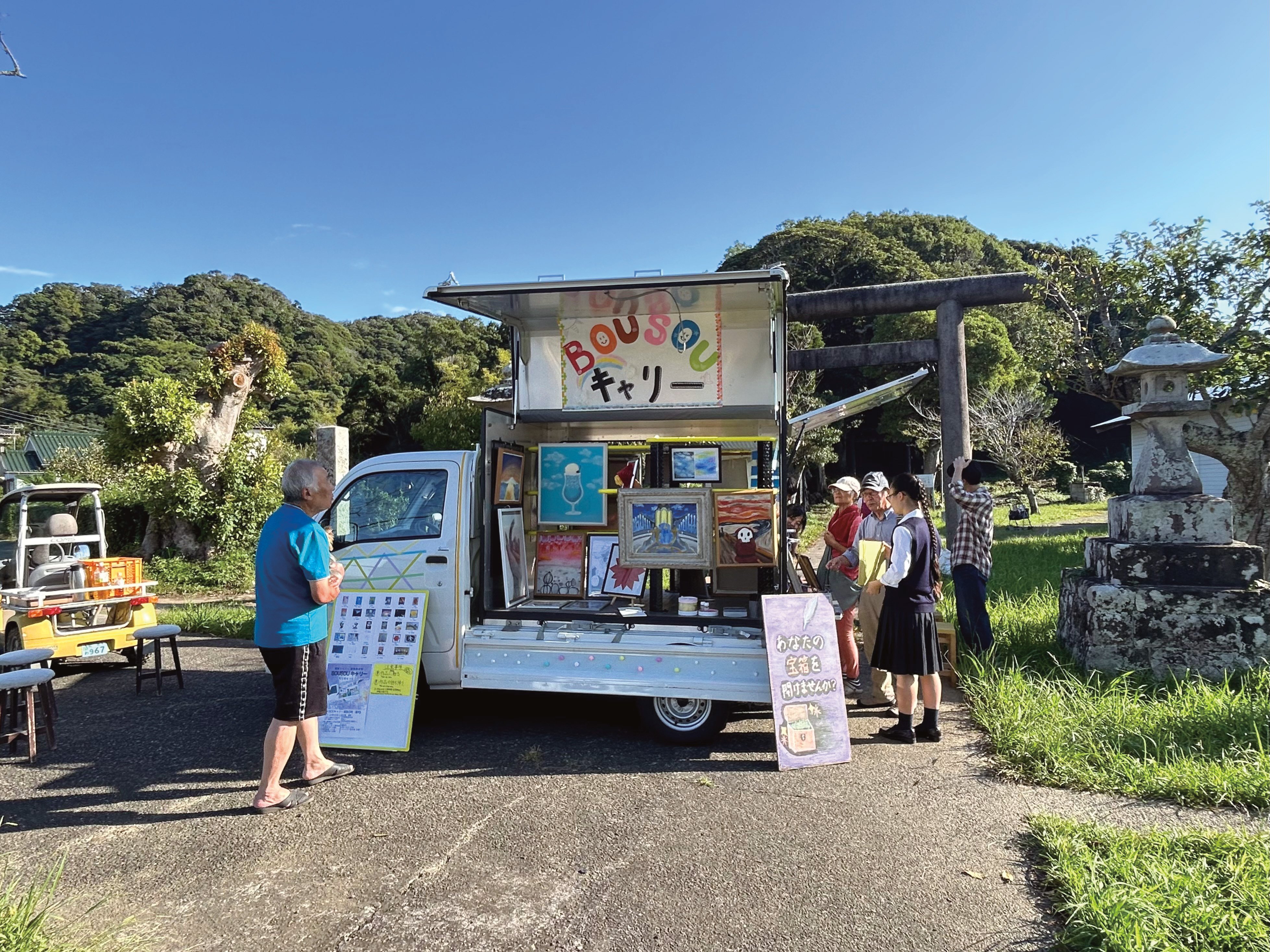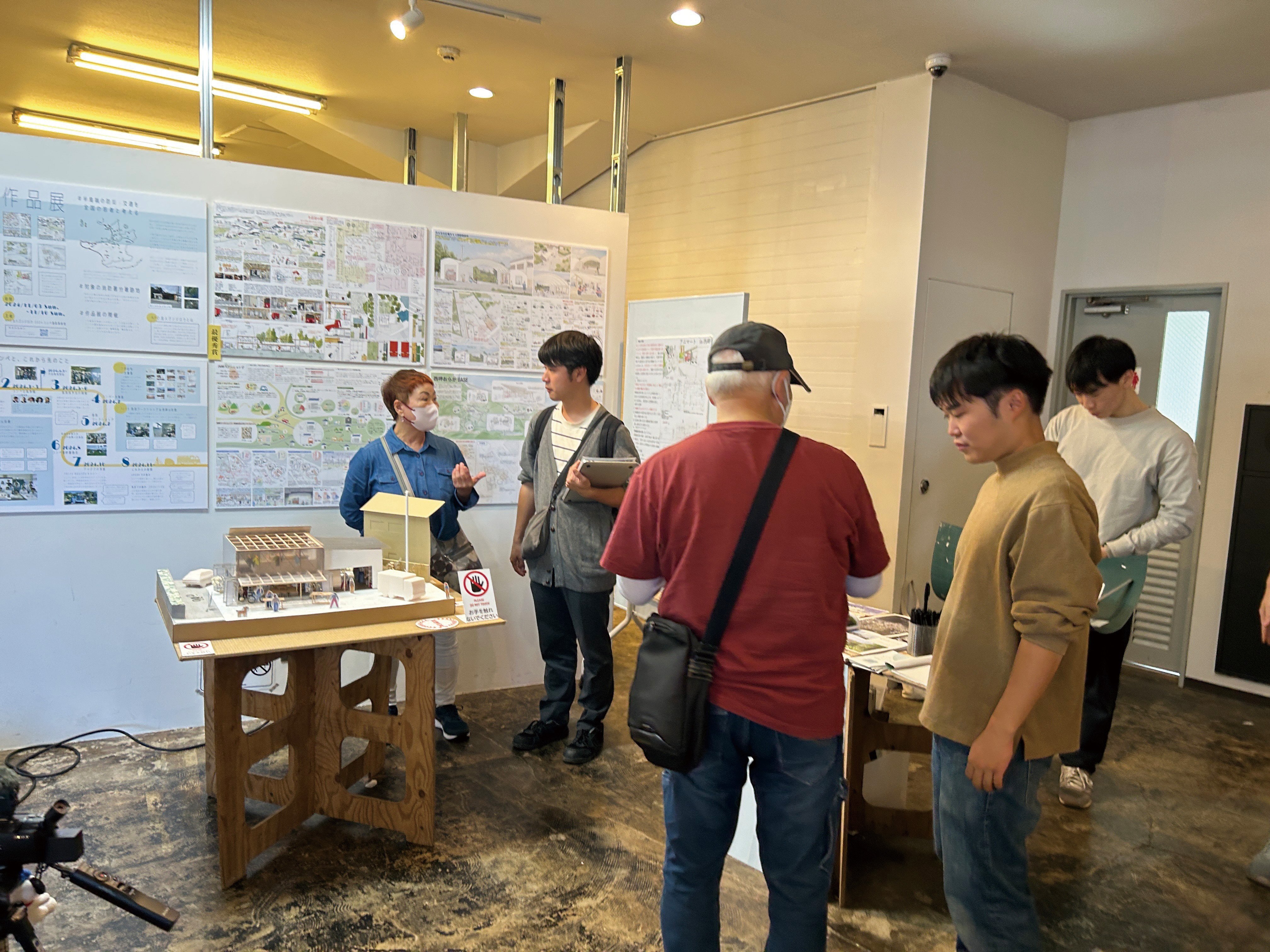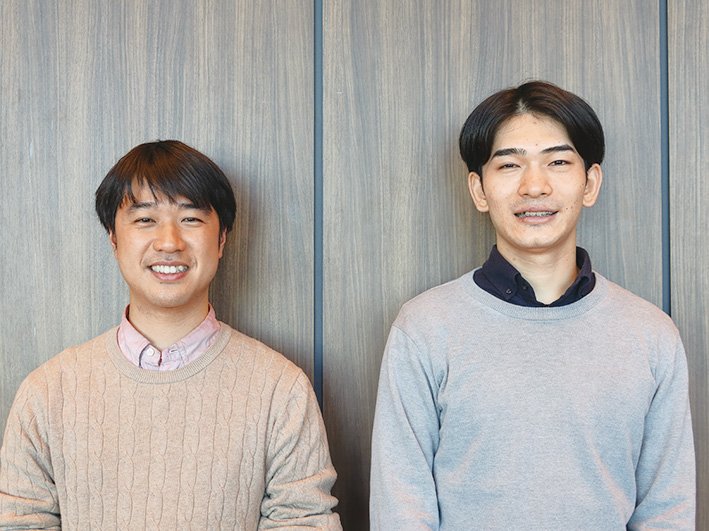We Support Students’ Activities and Introduce Them to You
Ideas for Forming Local Communities
Competition for Practical Ideas by People Under Age 30
Making a Volunteer Fire Brigade Station into a Local Community Hub
For a decade, the Akiko Okabe Lab in the Department of Socio-Cultural Environmental Studies has been conducting various projects in the Nishizaki district, Tateyama City, Chiba, to revitalize the local community. Tateyama City has a plan to demolish the old Nishizaki fire station and build a volunteer fire brigade station.
The Nishizaki district faces aging and declining population problems. To solve these problems, Taisei Shobayashi and Takamaru Okabe at Akiko Okabe Lab planned to use the station as a community hub to exchange information on disaster prevention and transportation. They held a “Competition for Practical Ideas from People Under Age 30” to gather ideas to disseminate the project nationwide. The theme was “Hub for Community Autonomy on the Edge of a Peninsula: Disaster Prevention and Transportation.”

During the 2-month application period, 26 ideas from different generations, including high school students and working adults, were received, and six ideas passed the first screening. The finalists visited the district and participated in a workshop with local residents. They submitted their final plans, including ideas for practical issues and needs. Finally, a team of university students with the idea of constructing a community hub with “tools” as the key concept won the first prize. Their idea was proposed to the company that would design the station.

A mobile museum suggested by a team at the local Awa High School circulated in the district with art products on a light truck. The mobile museum also helps in communication with senior citizens.
“We designed a competition for applicants to draw ideas deeply related to the district, inviting them to a workshop. It was a unique project. You cannot find it anywhere. The company incorporated some of their ideas. Unfortunately, not the whole idea would be realized, though. I felt the effect of the competition. We can apply this method to projects other than architecture as well,” Okabe stated.
“I felt the potential of a new type of sightseeing in which tourists can communicate with local people—not just enjoy scenery and services. In addition, the competition gave local people a chance to consider the station’s use and convinced them that the community’s revitalization was their matter. I hope we can do this project in other districts too,” said Shobayashi, who works on local revitalization projects in other districts.
The aging society appears to be accelerating social problems in districts where the population is declining. Projects that find the community’s insights and connect them to the municipality, similar to this project, are promising as practical solutions.

The competition exhibition was held in front of the Tateyama Station. The event was a good opportunity to communicate with the mayor and the local people.

Left: Taisei Shobayashi, First-year doctoral student at the Department of Socio-Cultural Environmental Studies
Right: Takamaru Okabe, Second-year master’s student at the Department of Socio-Cultural Environmental Studies
(Interview and text by Mayuko Araragi)
vol.45
- Cover
- On the Forefront of Cancer Genomics
- Visualizing the Universe: Exploration of Plasma in the Planetary Atmosphere and Space
- Finding Biological Information in Genetic Sequences
- Future of a Sustainable Low-Carbon City by a Transdisciplinary Approach
- GSFS Front Runners: Interview with an Entrepreneur
- Voices from International Students
- On Campus/Off Campus
- Events & Topics 1
- Events & Topics 2
- Information
- Relay Essay
